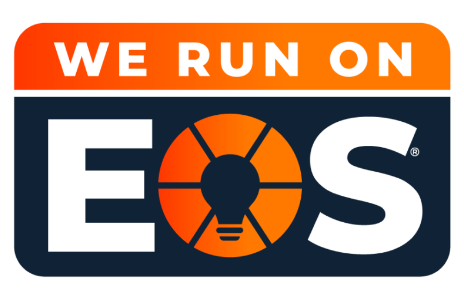Table of Contents
ToggleStarting a new job can be exciting, but it also comes with its fair share of stress and tiredness. In fact, 87% of people say they’re nervous when they start a new job, according to a recent survey from Monster. This is where coworkers become an essential part of the onboarding process.
A study by Microsoft shows that coworkers provide valuable information not found in training manuals, like stakeholder insights, navigating the organization, and understanding cultural norms.
Moreover, the more often new hires meet with their onboarding buddies, the more productive they become. 97% of new talents who met with their onboarding buddy more than eight times in the first 90 days reported a speedy productivity increase in their roles.
To integrate the onboarding process and the functions of onboarding buddies, the buddy program comes into play. It facilitates this process and ensures a quicker and more successful onboarding experience.
What is a Buddy Program?
A buddy program is a business strategy designed to help integrate new people into a team. This starts by assigning a colleague with great experience, known as a buddy, who will act as a mentor during the first days, weeks, or even months of adaptation to a new job.
The main goal of implementing a buddy system is to provide the new team member with a close and accessible resource that can offer guidance, answer questions, and share specific knowledge about the political culture and procedures of the organization.
Furthermore, the experienced buddy can help the new employee build a network within the organization and become familiar with their job responsibilities more quickly and effectively.
Key Benefits of Implementing a Buddy Program
More and more organizations are implementing onboarding strategies with a buddy system to improve employee experience and strengthen organizational culture. These programs, which assign a mentor to guide and support a new employee, offer several key benefits for both the individuals and the company as a whole.
#1. Reducing Employee Turnover
Assigning an experienced buddy to guide the new employee through the norms, culture, and general context of the company establishes a solid foundation for their integration. This initial support helps the new employee feel more secure, engaged, and productive from the start.
Welcoming and supporting individuals during their first days, weeks, or months are more likely to stay with the organization in the long term, directly impacting talent retention.
#2. Guiding the Onboarding Process
Implementing a buddy system makes the integration process of new employees easier. With the guidance and personalized support of an experienced buddy, new hires can become more quickly familiar with the policies, procedures, and expectations of the company.
This leads to a reduction in the time needed for the employee to reach full performance and feel fully integrated into their new work environment.
Moreover, speeding up the onboarding process fosters greater engagement and a sense of belonging from the start, which contributes to higher job satisfaction and long-term productivity.
Participation in a buddy program also offers relevant benefits for both the organization and the designated buddy. For companies, these strategies ensure a smoother transition for new talents, resulting in greater efficiency and shorter preparation time.
For the experienced buddy, this experience provides a valuable opportunity to develop new leadership skills, expand their professional network, and deepen their understanding of the company, which can contribute to their own growth and professional development.
#3. Enhancing Learning and Development
A buddy program serves as a practical platform for the fast-tracked learning and development of new employees. By having a direct line to an experienced colleague, newcomers can navigate the complexities of their new roles more effectively, gaining insights and knowledge that go beyond formal training sessions and materials.
This hands-on learning approach ensures that new hires can adapt to their roles faster, understanding not just the “what” but the “how” of their responsibilities. This kind of learning is more personal, direct, and often more impactful, leading to a deeper understanding of the job and a quicker route to becoming a productive member of the team.
#4. Boosting Confidence and Morale
The presence of a buddy provides new employees with a psychological safety net, significantly boosting their confidence and morale. Knowing there’s someone they can turn to with questions—no matter how trivial they might seem—helps reduce the anxiety that comes with entering a new work environment.
This boost in confidence can lead to more assertive participation in team activities, a willingness to take on challenges, and a more positive outlook on their new position. Higher morale not only improves individual performance but also contributes to a more vibrant, dynamic, and cooperative team atmosphere.
#5. Strengthening Internal Networks and Relationships
Buddies act as a bridge, connecting new hires to the broader social and professional networks within the company.
Through their buddy, new employees get the introduction to key figures, potential mentors, and peers who can play a significant role in their career development and day-to-day support. This early networking helps in breaking down silos and fosters a sense of community and belonging within the company.
Establishing these connections early on is critical for long-term success and integration into the company culture, making the transition smoother and more enjoyable for the new employee.
How to Structure an Effective Buddy Program
When managers consider implementing a mentorship program for new employees, the strategy should focus on actions that allow the newcomer to become familiar with the facilities, the organization, its peers, and their responsibilities. Here are three key steps to structuring an effective buddy system:
Selecting and Training Buddies
Choosing the right buddies is the first step to a successful strategy. Look for people with strong communication skills, patience, and a deep understanding of the company and its values.
It’s also crucial that they have the necessary time to dedicate to the new employee and a proven record of productivity. Training buddies is also essential to make them aware of their role as guides and mentors.
Setting Goals and Expectations
It’s essential to clearly define the buddies’ roles and responsibilities. This step includes providing guidance, answering questions, offering ongoing support, and teaching the new employee about relevant tools and systems. Also, set clear expectations about the program’s duration and the activities participants will carry out during it.
Feedback and Program Evaluation
To ensure the effectiveness of this structure, the buddy program needs an evaluation process.
This means gathering feedback from both new hires and buddies. This allows for the identification of improvement areas and adjusting the strategy as necessary. Moreover, periodic evaluation of the program helps maintain its relevance and effectiveness over time.
Regular Check-ins and Progress Tracking
Scheduling regular check-ins between the buddy and the new hire is a crucial step in monitoring progress and addressing any concerns that may arise. These meetings provide dedicated time for new employees to ask questions, seek advice, and discuss their experiences in a supportive environment.
Buddies should track the progress of the new hires, noting improvements, challenges, and areas that will need further support. This ongoing assessment helps in adjusting the learning path as necessary, ensuring that the new employee’s integration into the company is smooth and effective.
Encouraging Social Integration
Encouraging social interactions and integration within the team and the broader organization is a key objective of the buddy program. Buddies should introduce new hires to their colleagues, encourage participation in social and professional events, and help them navigate the company culture.
This step goes beyond the formal aspects of the job, focusing on building relationships and fostering a sense of belonging. Social integration is vital for creating a welcoming workplace atmosphere and can significantly impact the new hire’s overall satisfaction and engagement.
Developing a Resource Library
Creating a resource library specific to the buddy system can provide both buddies and new hires with quick access to essential information, tools, and best practices. This library should include documents, videos, and links to internal and external resources that cover everything from company policies and role-specific tutorials to cultural nuances and professional development opportunities.
Having a centralized, easily accessible resource ensures that new employees have all the information they need at their fingertips, making the onboarding process more efficient and effective.
Celebrating Milestones
Recognizing and celebrating milestones within the buddy program not only motivates new hires but also reinforces the value of the buddy system to the organization. Milestones can include completing the first week, mastering a new skill, or making a significant contribution to a project.
Celebrations can be as simple as a team shout-out, a certificate of achievement, or a small reward. Acknowledging these achievements boosts morale, encourages continued effort, and highlights the supportive, collaborative culture of the organization.
Final Thoughts
Implementing a buddy program is more than just a strategic move for onboarding new employees; it’s a game-changing process that enriches the workplace culture, enhances employee engagement, and significantly impacts overall business performance.
For business owners, the takeaways are clear: a well-structured buddy program not only smoothens the onboarding experience but also fosters a supportive, inclusive, and highly productive work environment. This investment in your people’s growth and satisfaction pays dividends in the form of higher retention rates, improved productivity, and a stronger, more cohesive team.
As you consider the steps to implement or refine your buddy program, remember the importance of careful planning, regular evaluation, and continuous improvement.
The goal is to create an environment that values, supports, and empowers new hires to succeed from day one. In doing so, you’re not just helping individuals to thrive; you’re building a foundation for your company’s long-term success.
Enhance Your HR Strategy with Virtual Latinos
As the demands of HR tasks continue to evolve, having a dedicated team to manage these responsibilities can significantly alleviate the workload and improve efficiency. Virtual Latinos offers highly skilled HR virtual assistants who specialize in managing various HR tasks, including the creation, implementation, and tracking of buddy programs. Our virtual assistants understand very well the nuances of HR management and can effectively provide the support you need to enhance your HR strategy.
By partnering with Virtual Latinos, you can ensure that your buddy system and other HR initiatives will execute flawlessly, allowing you to focus on core business activities. Our virtual assistants can handle everything from buddy selection and training coordination to feedback collection and program evaluation, ensuring that your buddy program is a resounding success.
Investing in a Virtual Latinos HR virtual assistant means investing in the future of your business and the well-being of your team. Let us help you build a more supportive, engaged, and productive workplace. Contact us today!










